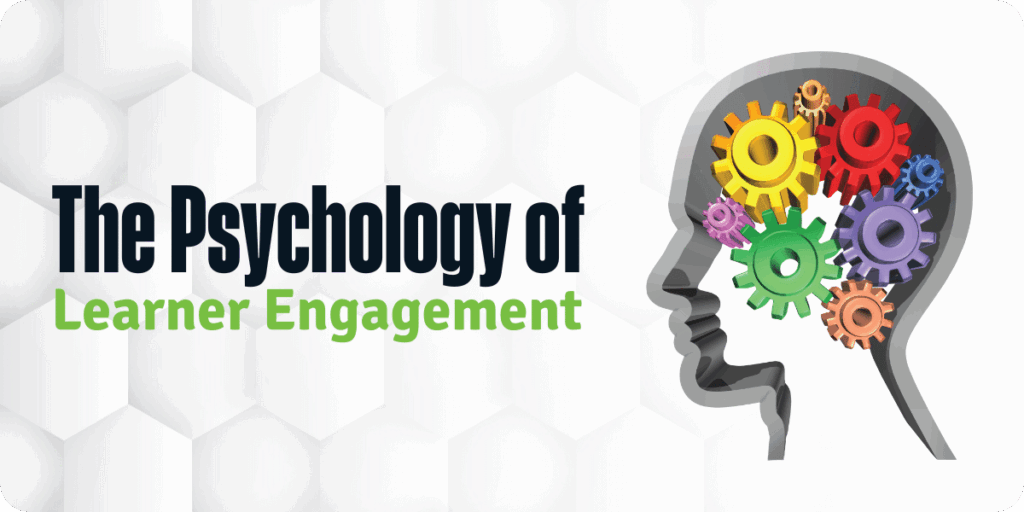Learner disengagement is a growing concern. Studies indicate that the average employee only dedicates 1% of their workweek to professional development. This can lead to wasted resources and missed opportunities for growth. But what if learning experiences were designed with the psychology of learner engagement in mind? What if they were compelling enough to draw learners in?
This article explores the key psychological principles that drive learner engagement and provides practical strategies for designing captivating learning experiences. Understanding how storytelling and other factors influence engagement is crucial for effective learning design. Explore what makes storytelling so effective in this HBR article.
Decoding Engagement: The 4 Core Psychological Drivers
To design learning that resonates, it’s important to consider the key psychological principles that intricately influence learner engagement. These core drivers do not operate in isolation; rather, they dynamically interact to shape the learner’s experience and its effectiveness.
Igniting the Spark: Fuelling Learner Motivation
Motivation is a driving force behind learning, determining whether learners are willing to invest time and effort. There are two main types: intrinsic motivation and extrinsic motivation.
Intrinsic motivation comes from within, driven by curiosity, interest, or a sense of purpose. Extrinsic motivation is driven by external factors like rewards or punishments, such as grades, bonuses, or fear of failure.
To support intrinsic motivation, learning experiences can provide learners with autonomy, relevance, and opportunities for mastery. Autonomy gives learners a sense of control, allowing them to make choices about what, how, and when they learn. Relevance connects learning to learners’ personal or professional goals, making it meaningful and applicable. Mastery allows learners to develop their skills and knowledge, building confidence and a sense of accomplishment.
Capability academies, for example, support intrinsic motivation by providing learners with personalised learning paths and opportunities to develop expertise in their chosen fields. By focusing on skills-based practices, these academies empower learners to take ownership of their development.
Attention Capture: Designing for a Distracted World
Attention is a limited resource. In today’s information-rich environment, it’s increasingly difficult to capture and maintain learner attention. Designing effective learning experiences requires an understanding of how attention works and how to optimise it.
Novelty, storytelling, and multimedia can be valuable tools for engaging learners. Novelty introduces new and unexpected elements, sparking curiosity and interest. Storytelling engages learners emotionally and creates a memorable context. Multimedia, such as videos, animations, and interactive elements, provides a variety of stimuli to help maintain attention.
Microlearning solutions, for example, deliver content in short, focused bursts, respecting learners’ limited attention spans and making learning more accessible. Immersive technologies like VR and AR can also be used to create engaging learning experiences.
To dive deeper into how virtual reality (VR) and augmented reality (AR) can create immersive and engaging learning experiences that transform training, explore this article.
Making it Stick: The Psychology of Memory and Retention
Memory is the process of encoding, storing, and retrieving information. Facilitating learning and retention requires an understanding of how memory works.
Spaced repetition, retrieval practice, and elaboration are key strategies for improving memory. Spaced repetition involves reviewing information at increasing intervals, strengthening memory traces over time. Retrieval practice involves actively recalling information, reinforcing learning and improving retention. Elaboration connects new information to existing knowledge, making it more meaningful and easier to remember.
Learning platforms often incorporate features that facilitate spaced repetition and retrieval practice, such as quizzes, progress tracking, and automated reminders. Learning content development services also employ strategies like storytelling, real-world application, and interactive exercises to promote elaboration and enhance memory.
Emotional Connection: The Heart of Engaging Learning
Emotions significantly influence learning. Positive emotions, such as joy, curiosity, and excitement, can enhance learning and memory, while negative emotions, such as anxiety, fear, and boredom, can hinder learning and decrease motivation.
Creating engaging learning experiences involves striving to evoke positive emotions in learners. Strategies like storytelling, social learning, and gamification can be employed. Storytelling engages learners emotionally and creates a sense of connection. Social learning provides opportunities for interaction, fostering a sense of community and belonging. Gamification uses game-like elements, such as points, badges, and leaderboards, to make learning enjoyable and motivating.
A focus on social learning and collaboration aims to promote positive emotional experiences and create a supportive learning environment. Gamification and other interactive elements can also be used to make learning enjoyable and motivating. To delve deeper into the strategies and benefits of gamification in learning, explore this TTRO article.
The Engagement Advantage: Your Practical Design Toolkit
Here are some practical tips for applying these psychological principles:
E-learning modules:
- Incorporate interactive elements like quizzes, simulations, and drag-and-drop activities to maintain attention and promote active learning.
- Use storytelling and real-world scenarios to make the content relevant and engaging.
- Provide learners with choices and control over their learning path to support autonomy.
- Offer regular feedback and opportunities for reflection to support motivation and mastery.
Virtual training:
- Use a variety of multimedia, such as videos, polls, and breakout rooms, to keep learners engaged.
- Facilitate interaction and collaboration to create a sense of community.
- Incorporate gamification elements, such as points and badges, to motivate learners.
- Provide opportunities to apply learning in real-world scenarios through simulations and role-playing.
Blended learning:
- Combine online and offline activities to cater to different learning styles and preferences.
- Use online platforms to provide access to resources, support, and collaboration.
- Use face-to-face sessions for activities that require interaction, feedback, and application of learning.
Captivating Learners for Lasting Impact
Understanding the psychology of engagement is crucial for designing learning experiences that captivate and inspire learners. By applying the principles of motivation, attention, memory, and emotion, learning designers can create impactful learning experiences.
TTRO is dedicated to partnering with organisations to design and deliver impactful learning solutions. If you’d like to explore how we can help you create engaging learning experiences that drive results, please visit our website.
